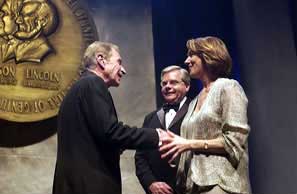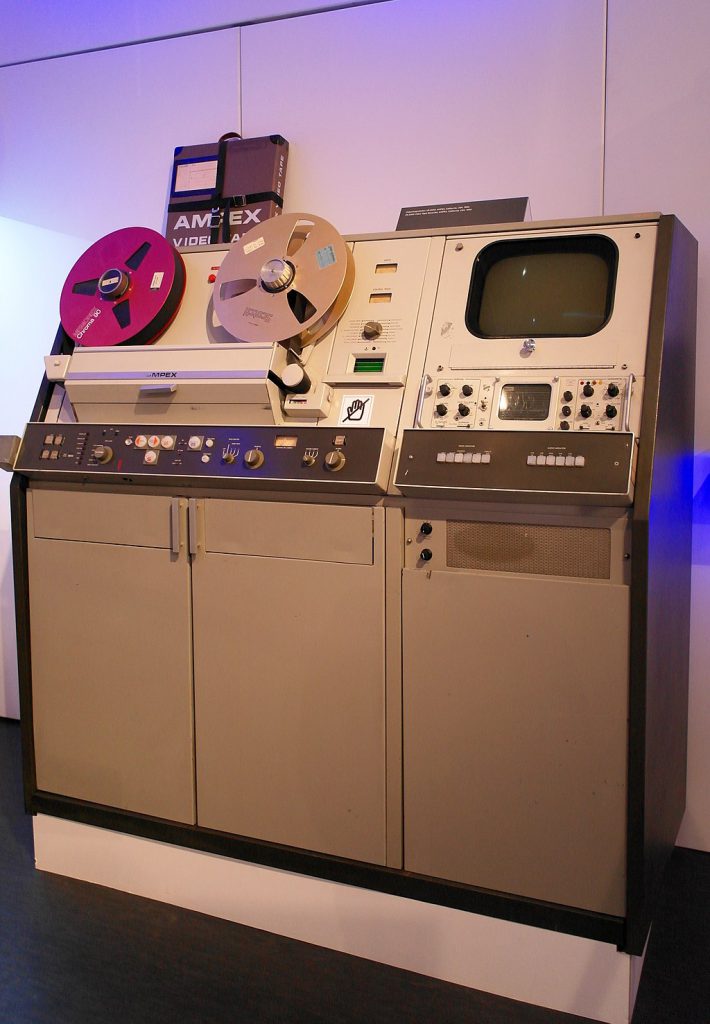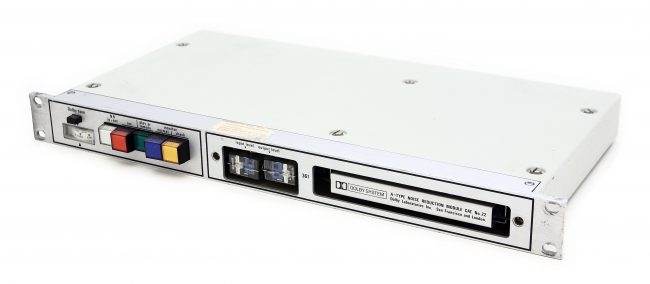
Ray Dolby (1933 – 2013, on the left) is inducted into the National Inventors Hall of Fame
On January 18, 1933, American engineer and inventor Ray Milton Dolby was born. Dolby is best known for the invention of his eponymous analogue noise reduction technology and played a key role in the development of the first commercial video tape recorders.
“To be an inventor, you have to be willing to live with a sense of uncertainty, to work in this darkness and grope towards an answer, to put up with anxiety about whether there is an answer.”
– Ray Dolby, as quoted in [12]
Ray Dolby – Early Years
Ray Dolby was born in Portland, Oregon, and was raised in San Francisco and attended Sequoia High School in Redwood City, California. Ray Dolby learned piano and clarinet in his childhood. For a while he was thinking about becoming a Hollywood cameraman. In 1948 he worked as a projectionist. Subsequently, Dolby started working part-time at Ampex in Redwood City, working with their first audio tape recorder in 1949. At San Jose State College and Stanford University, Dolby worked on early prototypes of video tape recorder technologies for Alexander M. Poniatoff and Charlie Ginsburg. Even though he was still a consultant without even holding a degree, Dolby is said to have played key role in the effort that led Ampex to unveil their prototype Quadruplex videotape recorder in April 1956 which soon entered production.

2 inch Quadruplex video tape recorder Ampex VR-2000 (1960) at the exhibition of National Czech Technical Museum, Prague., photo: Runner1616, CC-BY-SA 3.0
Dolby Laboratories
Dolby received his Bachelor in electrical engineering from Stanford in 1957. Subsequently, Dolby won a Marshall Scholarship for a Ph.D. in physics from the University of Cambridge, where he was a Research Fellow at Pembroke College and graduated in 1961. Ray Dolby became a technical advisor to the United Nations in India until the mid 1960s. In 1965 Dolby established his company, Dolby Laboratories, in London, with a staff of four people. He served as chairman for more than 40 years. Already in the same year, he invented the Dolby Sound System even though his first U.S. patent was not filed until 1969.
The Dolby Noise Reduction
The Dolby noise reduction process is employed during recording and during playback, that work in tandem to improve the signal-to-noise ratio. Dolby A operates across the whole spectrum, the other systems specifically emphasize the audible frequency range where background tape hiss, an artifact of the recording process that is similar to white noise, is most noticeable. The Dolby preemphasis boosts the recorded level of the quieter audio signal at these higher frequencies during recording, effectively compressing the dynamic range of that portion of the signal, so that quieter sounds above 1 kHz receive a proportionally greater boost. As the tape is recorded, the relative amplitude of the signal above 1 kHz is used to determine how much pre-emphasis to apply – a low-level signal is boosted by 10 dB or 20 dB. As the signal rises in amplitude, less and less pre-emphasis is applied until at the “Dolby level” (0 VU), no signal modification is performed.

Dolby 361 A-type noise reduction module, photo: PJ, CC-BY-SA-3.0
The first sale of the “Dolby A” equipment was to Decca Records in London. The company released their debut recording which had been mastered on to tape using the new system, a session of Vladimir Ashkenazy playing Mozart piano concertos, in 1966. [8] However, the Dolby component originally cost £700 (the equivalent of £11,000 today) and so was only suited to professional recording studios. Dolby set about developing a less complex, and therefore less costly, filtering system adapted for domestic use, which he termed “Dolby B”. [8]
Dolby and the Cinema
The first film with Dolby sound was A Clockwork Orange in 1971, directed by Stanley Kubrick [9] which used Dolby noise reduction on all pre-mixes and masters, but a conventional optical sound track on release prints. In 1975 Dolby released Dolby Stereo, which included a noise reduction system in addition to more audio channels. The first Left-Center-Right-Surround soundtrack was encoded on the movie A Star Is Born in 1976. In 1977 the company’s Dolby Stereo system was used for the production of the Star Wars films and Close Encounters of the Third Kind.[8] In the next decade, it is believed that over 6.000 cinemas worldwide were equipped to use Dolby Stereo sound. The company kept innovating and Dolby Stereo Digital was first featured on the 1992 film Batman Returns. In 2010, the company introduced Dolby Surround 7.1, and set up theaters worldwide with 7.1 surround speaker setups to deliver theatrical 7.1 surround sound. The first film to be released with this format was Pixar’s Toy Story 3 which was later followed by 50 releases using the format. Two years later Dolby introduced its Dolby Atmos, a new cinematic technology adding overhead sound, first applied in Pixar’s motion picture Brave. In 2014, Dolby Laboratories announced plans to bring Atmos to the home theatre industry.
Awards and Achievements
Dolby’s company won 19 Academy Awards and 13 Emmy Awards, and he was personally honoured in 2004 with inductions into the National Inventors Hall of Fame in the U.S. and the Royal Academy of Engineers in the U.K.[4] In total, Dolby filed more than 50 patents. In 2010, Dolby was awarded the IEEE Edison Medal “For leadership and pioneering applications in audio recording and playback equipment for both professional and consumer electronics.”[7]
Dolby died of leukemia on September 12, 2013, at his home in San Francisco at the age of 80.
Ray Dolby “Noise Reduction” (Mobile 21), AES Oral History, [11]
References and Further Reading:
- [1] The Race to Video. American Heritage of Invention & Technology, Fall 1994
- [2] Ray Dolby Life and Work at Dolby Laboratories
- [3] 50 Years of Innovation – Dolby History
- [4] Ray Milton Dolby at Britannica Online
- [5] Ray Dolby: Inventing the Future of Entertainment
- [6] My Ten Years at Ampex and the Development of the Video Recorder, by Fred Pfost, an early colleague of Dolby’s
- [7] Ray Dolby at Engineering and Technology History Wiki
- [8] Marcus Williamson, Ray Dolby: Inventor whose noise-reduction technology transformed sound reproduction, Obituary, The Independent, Sep 13, 2013
- [9] Breaking New Grounds in Cinematography – Stanley Kubrick, SciHi Blog
- [10] Ray Dolby at Wikidata
- [11] Ray Dolby “Noise Reduction” (Mobile 21), AES Oral History, Audio Engineering Society, Inc @ youtube
- [12] Ray Dolby quotes at inspiringquotes.us
- [13] Timeline for Ray Dolby, via Wikidata






Pingback: Whewell’s Gazette: Year 2, Vol. #28 | Whewell's Ghost
Pingback: Whewell’s Gazette: Year 3, Vol. #23 | Whewell's Ghost